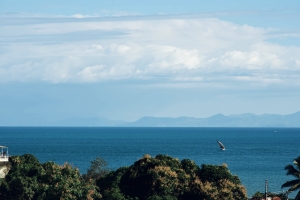Nosy Tanikely for more water-related activities
One of the most attractive touristic places in Madagascar, Nosy Tanikely is an island located at the southern part of Nosy-Be. Just half an hour from the nicknamed “Perfume Island”, Nosy Tanikely National Marine Park abounds in popular marine activities that make it the most visited island in Nosy-Be. Despite it has been declared as a protected site in 2010, water sports ranging from scuba diving to windsurfing remain highly practiced especially by those who look for more adventure and adrenalin. Moreover riding on this southern coast of Nosy be is always tempting thanks to its wind blowing season starting from late March to late November. As well as its breathtaking sea that offers popular dive sites gives chance to diver lovers to be part of the dive clubs, so that they could gather to visit marine spots with a variety of underwater fauna and flora. Here are some of those famous sites:
The wreck, a diving site which is located between 25 and 30meters underwater, a site with 4 shipwrecks of small and medium corals with thousands of fish including large groupers and groupers, large stingrays, guitar strings, school of jacks, barracudas and batfish.
The gorgons located in the 15 – 20meters, with a field with thousands of huge gorgonians, huge turtles, seahorses and crocodile fishes.
The manta point, a diving place with a depth of 25 to 28meters sanded bottom with coral potatoes and served as a cleaning station for Mantas rays. This dive spot is suitable for people who have a little experience of scuba diving.
The Gaby rocks, deep falling spots of 40 to 70meters with destroyed corals and very regularly sharks.
Other dive sites with several drop offs between 20 and 80m with a better visibility than in other sites and a pelagic frequently met.
Nosy Tanikely is not the only famous touristic attraction in Nosy be. It has actually another large number of paradisiacal islands along with stunning landscapes to discover and miscellaneous activities to practice either terrestrial or maritime ones. Nosy Komba is one example, also known as the “lemurs’ island ”and which is made famous for its activities of hiking and trekking throughout the wild nature of the beautiful touristic site. That been said Nosy-Be still remains the great island of surprises and discoveries, an extraordinary place to spend with family during vacation time.
Sources: ORTANA, Live Madagascar




